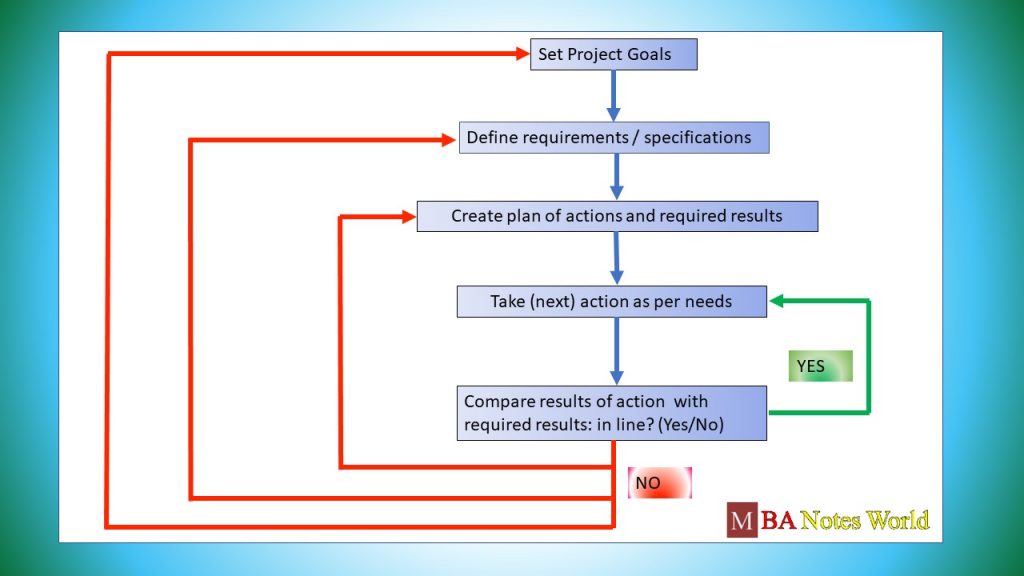Project management is becoming increasingly important. In the past, project management consisted mainly of collecting metrics and project data for evaluation, then making adjustments in order to increase productivity and efficiency. Project managers were also responsible for managing human capital (making sure that a project had enough “people” to get all tasks completed). With the rapid proliferation of technology, the importance of project management has increased exponentially in terms of the tasks required of a project manager, as well as the knowledge necessary to perform these tasks.
Project definition usually starts with some vision or idea. An individual and her family, a company, or a government entity wants to create something, the desired project result. Maybe, it is the first home, a new IT system, or a bridge across a 1-mile wide river. At this point, at the beginning of the project, we have only fuzzy ideas of where to go. There is just this vision on a very high level, but we do not yet know how the result will look like or how we could get there.
We want to be in control of our project at all times. In the implementation and closure phase, this means being able to compare results of action with required results. Therefore, we need a project plan that contains all the necessary actions and required results. Moreover, we only can create such a plan if we know enough details about the project goal and requirements or specifications of the desired project results.
We have to refine our vision into a clear goal, and then, break down this goal into sub-goals and sub-sub-goals, until we can define even detailed requirements or specifications our desired end result has to fulfill. In order to support this process of defining more and more detailed characteristics of the project result we need to follow certain criteria of how to setup goals, requirements, or specifications: we need to define SMART goals, requirements, and specifications.
Projects
Projects exist in every type of human enterprise. They are unique, complex undertakings that create new products, facilities, services, and events, among other things, bring about major organizational and other desired changes or recovery from natural or man-made disasters. Projects have starting and ending points in time and progress through a number of life cycle phases.
The discipline of project management has evolved because the more traditional, well-established industrial age principles and methods for managing our classical functional organizations (involving ongoing, repetitive operations of various kinds) do not work well for planning, controlling, and managing projects, programs, or project portfolios.
Projects are comprised of diverse tasks that require diverse specialist skills and hence cut across the traditional functional organizational lines. They are temporary endeavours with a finite lifetime and so do not provide stable organizational homes for the people involved. The challenge is to accomplish the right projects at the right time while providing stable homes that develop the diverse skills needed for all the specialists who contribute to the projects.
Key differentiating characteristics of PM when compared to functional organization management are:
Assignment of integrative responsibilities related to each project, program and project portfolio (as defined in the following section):
- General manager/managing director
- Portfolio steering groups (or portfolio governance committees)
- Project and program sponsors (or directors)
- Manager of project management (or Chief Projects Officer/CPO) (the Project Management Office/PMO)
- Project and program managers
- Affected functional (specialist) managers and functional project leaders.
Application of integrative and predictive practices, methods, systems and tools for producing and effectively using the information required to plan, schedule, monitor, and control the scope, risks, schedules, resources and costs of projects, programs and project portfolios, integrating their entire life cycles. Iterative processes are sometimes required, (for software or R&D projects) but these still have a predictive objective for the entire project.
Building and directing each project and program team, comprised of the multidisciplined functional managers and specialists needed to create, plan, execute, and manage each project and program.
In almost every case the evolution of the PM discipline within a complex organization results in a project/functional matrix of responsibilities that can range from a weak to a strong matrix, referring to the authority of the project and program managers to give project direction to the project team members.

Be the first to comment on "An Introduction to Project Management"